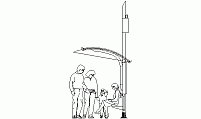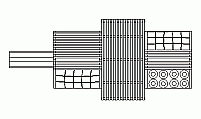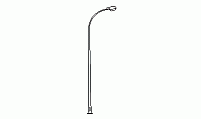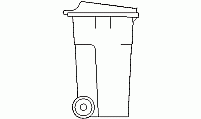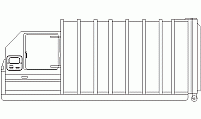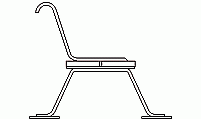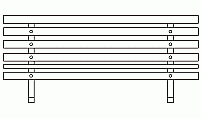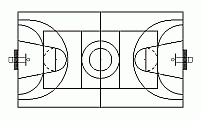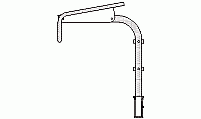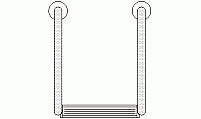CAD Blocks categories
 3D models
3D models home furniture
home furniture sanitary ware - bathrooms
sanitary ware - bathrooms professional equipment
professional equipment doors and windows
doors and windows people and animals
people and animals plants and trees
plants and trees vehicles - transports
vehicles - transports architectural details
architectural details mechanical - electrical
mechanical - electrical urban planning - civil works
urban planning - civil works safety health construction
safety health construction accessible design
accessible design drawing sheet
drawing sheet signals
signals construction machinery
construction machinery accessories and objects
accessories and objects maps and street maps
maps and street maps
Outdoor Seating CAD Block for Public Spaces

size: 4 kb
category: street furniture
related categories:
description: A wood-slat bench with three steel supports, including two with integrated armrests, designed for parks, plazas, and public spaces.
file extension: .dwg CAD - AutoCAD software
Comprehensive Outdoor Seating CAD Block Guide for Public Spaces
Overview of the Outdoor Seating Design
The outdoor seating CAD block illustrates a robust and ergonomic bench designed for public spaces like parks, plazas, and open areas. The design features three steel supports, including two on the ends that also function as armrests and one central support for enhanced stability. The seat is constructed with two horizontal wood slats, providing comfort and durability for users. This bench is ideal for accommodating two adult users comfortably, ensuring functionality and a modern aesthetic for urban or natural environments.
Comparable designs include variations with additional supports for larger seating capacities, or backless benches for more open layouts. Such benches are tailored to meet the needs of outdoor spaces while maintaining ease of maintenance and longevity. This specific design is a practical and aesthetically pleasing choice for heavily trafficked public areas.
Standard Dimensions for Outdoor Seating
The dimensions for outdoor benches vary depending on seating capacity and design requirements. For benches designed for two adults, the standard length is approximately 71.85 inches (1.825 meters), with a width of 24.41 inches (0.62 meters) and a height of 34.65 inches (0.88 meters). These dimensions provide a compact and comfortable seating solution for smaller spaces.
Benches accommodating three people typically have a length of 70.47 to 72.44 inches (1.79 to 1.84 meters), a width of 23.43 to 47.24 inches (0.59 to 1.2 meters), and a height of 32.68 to 33.46 inches (0.83 to 0.85 meters). For larger configurations, four-person benches extend to 94.69 inches (2.405 meters) in length, with a width of 52.76 inches (1.34 meters) and a height of 33.46 inches (0.85 meters). These options ensure flexibility for various public space requirements.
Materials and Construction FAQs
- What materials are used for the bench?
- This bench uses treated wood for the slats and steel for the supports. The wood is weather-resistant, often finished with sealants to protect against moisture, UV rays, and wear. Steel components are powder-coated or galvanized to prevent corrosion, ensuring longevity in outdoor environments.
- How is this bench anchored?
- The bench is typically anchored using bolts and plates secured to a concrete foundation. This installation method ensures the bench remains stable and prevents theft or tipping, even in high-traffic areas.
- Is the bench weather-resistant?
- Yes, the materials are specifically chosen for outdoor use. The wood slats are treated to resist decay, while the steel supports are coated to withstand rain, sun, and other harsh conditions. These treatments make the bench highly durable for long-term outdoor applications.
- Can this design accommodate accessibility needs?
- Yes, the bench design complies with ADA and similar accessibility standards. Features like appropriate seat height, armrests, and ample clearance for wheelchairs ensure inclusivity for all users.
- What maintenance is required?
- Regular cleaning and inspection are necessary. Wood slats may require resealing or refinishing every few years, and steel components should be checked for rust or damage. These steps help maintain the bench's safety and appearance over time.
Advantages of this Outdoor Seating Design
This outdoor seating design offers several advantages. The combination of wooden slats and steel supports ensures a balance of durability and aesthetics, making it suitable for various outdoor environments. The ergonomic armrests add comfort, while the central support enhances structural stability. Its compact size is ideal for small spaces, while the robust construction withstands high usage in public areas.
Compared to other seating designs, this model offers superior weather resistance and low maintenance. The treated wood and powder-coated steel extend its lifespan, reducing replacement costs. Additionally, the versatile design complements both natural and urban landscapes, making it an excellent choice for a wide range of public spaces.
History and Evolution of Outdoor Seating
Outdoor seating has evolved significantly over the centuries. Early designs prioritized functionality over aesthetics, often made of simple wood or stone. With urbanization, designs began incorporating materials like cast iron and treated wood to enhance durability and comfort. Today, benches combine innovative materials such as recycled plastics, treated wood, and powder-coated metals to ensure longevity and minimal environmental impact.
Globally, outdoor seating reflects regional preferences. In Europe, designs often emphasize artistry and integration with natural surroundings. In North America, sustainability and accessibility are key priorities, while in Asia, traditional and modern styles often blend harmoniously. This evolution showcases the adaptability and enduring relevance of outdoor seating in public spaces.



